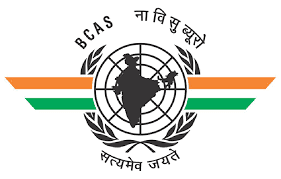Why all this nonsense? All that I want to do is go from point A to point B. Fast. And, I’m paying for it. Why must I land up at the airport three hours early for a two-hour flight? Why should I stop my car so many times and get checked? Why so many checkings – on the road, at the gate, at the counter, at the interminable queues, at the aircraft? What is the thing about shoes? And my water bottle, and my shaving gel and my torchlight …? Who decides all these ridiculous things? And why?
There is actually a reason all these things happen. Not all of it started
in one go by some Mad Monkey Kung Fu who got up one day and said, “Hey, from today on,
I’ll really put all air travellers to all possible types of torture!”
On December 17, 1973, a Pan Am aircraft (flight 110) was attacked by PLO terrorists on the tarmac in Rome with weapons removed from hand luggage, killing 44 and destroying the aircraft. This led to pre-flight checks of aircrafts. In 1973, the Federal Aviation Administration (FAA) in the United States issued an emergency rule mandating screening of all passengers and hand baggage. Other countries followed the same in short order.
Efforts to develop explosives detection equipment followed a bomb
explosion through dynamite sticks placed in lockers at La Guardia airport in
New York on December 29, 1975 near the Trans World Airlines (TWA) baggage
reclaim terminal killing 11 people and seriously injuring 74 others. After
this, FAA increased its efforts to develop the explosives detection
capabilities and minimise the chances of “bombs in bags.”
On June 23, 1985, Air India flight 182 on Montreal-London-Delhi-Bombay route disintegrated mid-air over the Atlantic killing all 329 people aboard. This is considered “one of the worst (tragedies) in the aviation history.” In just an hour from then, another bomb on another Air India flight from Tokyo to Mumbai went off during luggage transfer at the Tokyo airport and killed two baggage handlers. These two were coordinated attacks through bombs in registered baggage which was unaccompanied. This incident led to stricter baggage screening, baggage identification and baggage reconciliation by the passengers. Unaccompanied baggage started getting discouraged or screened vigorously.
On December 27, 1985, there were simultaneous attacks at airports in Rome and Vienna where El Al (Israeli airline) passengers were targeted in the check-in area of the airports. In the attacks, 19 civilians and four terrorists were killed and 140 civilians were injured. This incident led to armed guards being deployed in check-in areas. In India, armed personnel of the access control unit are deployed not only in the check-in area but also on the concourse foyer before entry into the terminal building. Some airports also have Quick Response Teams (QRTs) outside the airports.
The 1980s witnessed increasing number of sabotage of civil aircrafts by terrorists. In 1985, there were 13 such acts killing 473 people. On December 21, 1988, a Boeing 747 aircraft of Pan Am airways flight PA 103 met with explosion over Scotland resulting in the death of all its 259 passengers and crew and 11 residents of Lockerbie. The destruction was caused by using SEMTEX, a high-performance plastic explosive. Thermal Neutron Activation (TNA) systems for detecting explosives were introduced in 1988. On December 19, 1987, FAA also required positive passenger bag matching for all international flights unless such unmatched bag had been physically searched.
On December 24, 1994, Air France flight 8969 was hijacked at Algiers. Three passengers and all the four hijackers were killed in armed action at Marseille. The hijackers had gained access to the aircraft by dressing as policemen with Air Algerie logo. This incident highlighted the danger of “insider threat” and as a response, airport staff were mandated to be screened while entering restricted areas of the airport. Further, the background and antecedent checks of the employees were tightened.
December 24, 1999 saw the last hijacking incident involving an Indian carrier when Indian Airlines flight IC-814 flying from Kathmandu (Nepal) to Delhi (India) was hijacked to Kandahar (Afghanistan) and the passengers held hostage were reportedly released in exchange for some convicted terrorists and a large amount of cash. In this case, enquiry revealed that weapons and ammunition were supplied to the terrorists in the tarmac area. This incident highlighted deficiency in the pre-embarkation security checks and in-flight security measures. In response, India moved to gradually inducting a single force, CISF for access control and security screening of passengers and hand baggage, mandatory secondary ladder point checking at certain airports, in-flight security officers (IFSOs or Air Marshals) and a security fee to be levied on passengers.
On December 4, 2000, a Sabena Airbus flight, while approaching Bubjumbura airport, Burundi, was shot at by machine gun fire injuring two passengers and damaging the plane. This brought into focus the importance of funnel area guarding. In many countries, this area is at least kept under surveillance by the security forces.
On July 24, 2001, six suicide bombers of LTTE (Liberation Tigers of Tamil Eelam) carried out an attack on Colombo airport and destroyed several empty aircrafts. The incident resulted in loss of aircrafts costing USD 450 million, slowdown of the Sri Lankan economy and drop in tourism. This incident led to QRTs being deployed at major airports in many countries which also deployed barriers on the approach road for checking and deterrence.
All the above incidents and the security responses were mere chicken feed
compared to what happened on September 11, 2001, commonly known as 9/11. That calls for another blog.





